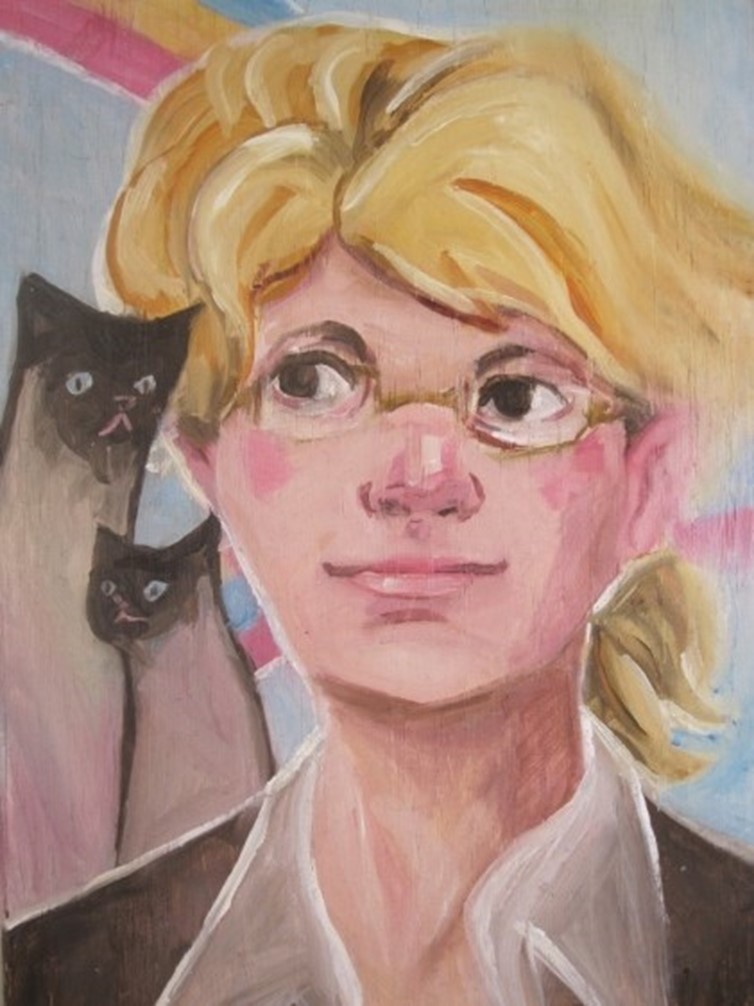Professor Anna Boshnakova Presents Research in Madrid
Dr. Anna Boshnakova was invited to present the preliminary results of her project “Hermeneutics of music-related visual narratives on 5th c. B.C.E. Greek vases. The So-Called Non-Sense Inscriptions in a Musical Context: Identification, Analysis, and Interpretation” at the International Congress “Attic Vases in the Mediterranean Culture: Models, Identities, Uses and Narratives.” The conference was held in person on April 28 and 29, 2022 at the Autonomous University of Madrid and the National Archaeological Museum, Madrid, Spain.
Her study focuses on the problem of musical literacy in late Archaic and early Classical Greece. The author argues in her paper, that driven by the invention of the notation some early attempts were probably made among the ancient Greek professional musicians to record their music.

Due to the lack of surviving musical papyri before 4 c. B.C.E. and other direct written evidence, the author takes the iconographic approach in her research. She investigates the iconographic data, considered one of the most significant sources of information on ancient Greek music, especially in cases when direct written or archaeological evidence is rare or does not exist. She systematically identifies, collects, analyzes, and interprets music-related visual narratives with non-sense inscriptions depicted on Greek vases. Special attention is paid to rare vase depictions attributed to Douris as well to the Athena, Adria, and Eretria Painters with various forms of artistic representation of melody, imitation of musical notation as well as a professional production of music. The study emphasizes the difference between the features of papyri-type chartae musicae, and those of ordinary literary papyri. In conclusion, the study proposes a reconstruction of the process of composing and recording music in the pre-Hellenistic period and provides evidence that even though there are no preserved papyri with musical notation from late archaic and early Classical Greece, the practice of recording music (musical literacy) already existed in the musicians’ guild at least from the late 6th c. B.C.E. before it was documented by some vase painter.

Ancient Greek painters constructed music realities through visual narratives observing the details of musicians’ practices, unnoticed by other people. Since they controlled many aspects of the depiction some of them chose to pair the music-related images with inscriptions to emphasize the storyline, just like today, in modern comics, the captions provide the audience with more clear information about how the story unfolds. The Athena painter (Fig. 1) depicted a string of letters around the musicians, imitating musical notes of the instrumental notation system. Just like today we “depict a melody” in an image using the symbols of contemporary musical notation (Fig. 2)
The promising results of this investigation can lead the research on Ancient Greek music culture to a significant revision of the European history of ancient music theory and practice.
In her research, Dr. Boshnakova uses analogy as evidence, which makes it possible to explain the meaning of the enigmatic meaningless inscriptions which in a musical context they make sense – an imitation of musical notation.

Dr. Anna Boshnakova is a Professor of Anthropology at the Faculty of Humanities and Social Sciences and teaches cultural and applied anthropology, anthropology of music, visual narratives, and creative studies courses in the Degree Breadth area. Her expertise encompasses anthropology of creativity, theory and history of culture, visual and material culture, philosophy of music, and music archaeology. Her research focuses on the reconstruction of cultural realities through recovering and exploring ethnographic collections, music-related archaeological artifacts, historical evidence, and visual narratives. She is a recipient of the 2021 Sheridan Scholarly Teaching and Learning Award and her participation at the International Congress in Madrid was supported by the SPARK: Sheridan Centre for Academic Excellence and the Faculty of Humanities and Social Sciences professional development fund.

